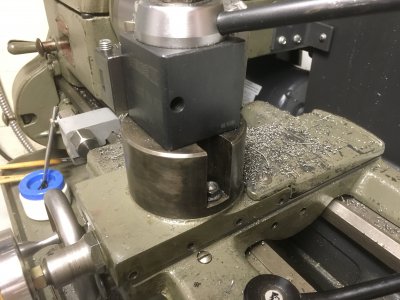- Joined
- Oct 18, 2016
- Messages
- 2,872
10" Logans can be like that. You've pretty much covered the possibilities, though it might be possible to find tool holders that position the tool a bit lower. For mine, I decided to make a solid plinth that's about .100" lower than the compound and use 3/8" tools when the compound is required.
I use the plinth most of the time. The other advantage of the plinth is that there's greater rigidity, so less chatter and better DOC's. I also
like working around it: no handle on the compound to bump into just before I make my last pass...
The only option on your list I would avoid is milling the top of the compound. There isn't a huge amount of material there
to begin with and you could cause it to break when tightening the nut.

I use the plinth most of the time. The other advantage of the plinth is that there's greater rigidity, so less chatter and better DOC's. I also
like working around it: no handle on the compound to bump into just before I make my last pass...
The only option on your list I would avoid is milling the top of the compound. There isn't a huge amount of material there
to begin with and you could cause it to break when tightening the nut.

Last edited:
